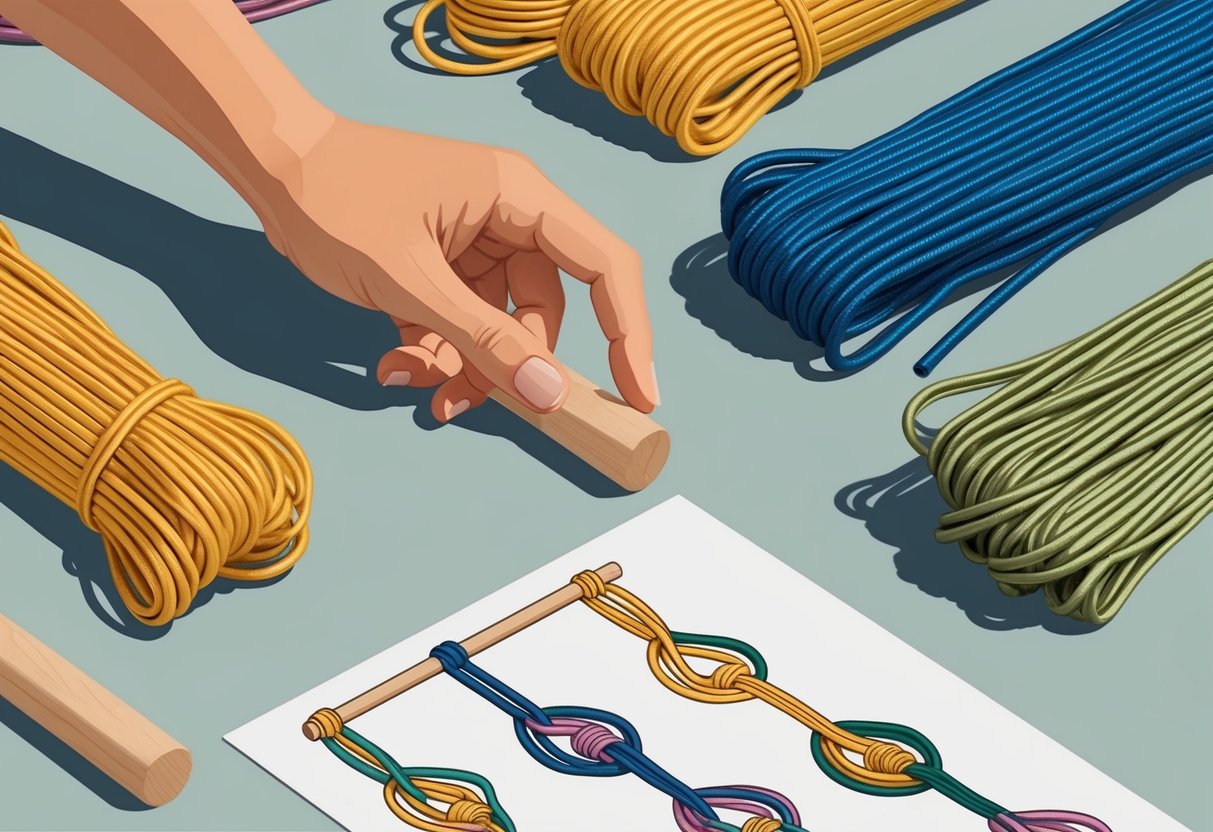
Learning how to make a macrame wall hanging can seem intimidating at first. With clear instructions and the right materials, anyone can create stunning home decor.
This easy macrame wall hanging tutorial for beginners shows step-by-step how simple knots and a bit of creativity can turn basic cord into stylish art for any wall. Macrame is approachable for newcomers, with beginner-friendly patterns that build confidence as crafters see their work take shape.
Many people are drawn to macrame for its calming process and ability to add texture and interest to any space. With straightforward techniques and commonly used knots, beginners will quickly become comfortable crafting their first wall hanging.
For those looking for visual guidance, there are excellent video tutorials available. A super easy macrame wall hanging tutorial designed with beginners in mind makes following along stress-free.
Starting with a basic macrame wall hanging is an ideal project for someone just entering the craft. As skills build, it’s easy to experiment with new knots and patterns.
What Is Macrame?
Macrame is a form of textile-making that relies on tying knots to create decorative patterns and structures. This craft has a rich history and continues to be a popular design element, particularly in handmade wall hangings and home decor.
History of Macrame
Macrame’s origins can be traced back to ancient times when artisans and sailors used knotting techniques for both practical and decorative purposes. The word “macrame” is believed to come from the Arabic “migramah,” meaning “fringe,” which refers to the fringed finish commonly seen in early works.
Sailors played a key role in spreading macrame across continents. They created macrame items like hammocks, belts, and decorative coverings during long sea voyages, exchanging or selling these goods at ports around the world.
By the 19th century, macrame became popular in Western Europe, often featured in Victorian-era home décor. Macrame techniques typically involve basic knots such as the square knot and the half hitch.
These knots are still essential in modern macrame wall hanging designs, which blend tradition with new aesthetics.
Macrame in Modern Decor
Macrame has experienced a resurgence in recent years, frequently showcased in contemporary interiors. Handmade macrame wall hangings are especially popular, adding texture and a bohemian touch to living rooms, bedrooms, and offices.
Their natural fibers suit both minimalist and eclectic styles. With accessible materials—such as cotton cord, jute, or hemp—macrame appeals to DIY enthusiasts and professional makers alike.
Popular pieces include wall hangings, plant hangers, curtains, and even jewelry. Step-by-step tutorials like those in beginner-friendly videos and guides allow anyone to create their own macramé wall hanging, making the craft more accessible than ever.
Customizable designs and the calming process of knotting contribute to macrame’s current popularity.
Choosing the Right Materials
Selecting the correct macrame materials is essential for creating a sturdy and attractive wall hanging. Many beginners often focus on the knots, but the choice of cord, rope, and accents like wooden beads will deeply affect both the process and the finished result.
Types of Macrame Cord
Macrame cord comes in several different materials and thicknesses, each with unique properties. Cotton cord is the most popular for beginners because it is soft, flexible, and easy to unknot.
Jute and hemp cords offer a rustic look but can feel coarse, making them less comfortable when working on large projects. Braided cords do not unravel easily, while single-strand cotton cord allows for a fringed effect and is easier to comb out.
For a beginner wall hanging, a cord thickness of 3mm to 5mm provides the best balance between manageability and visual impact. Specialty cords, like metallic or recycled fibers, can add decorative touches but may be harder to find at a local craft store.
Selecting the Best Cotton Rope
When choosing cotton rope for macrame, consider both the quality and the origin. Look for 100% natural cotton rope, which is softer and often easier to dye than blends containing polyester or synthetic materials.
Cotton macrame rope usually comes in twisted or braided varieties. A twisted cotton rope is suitable for projects where fraying and tassels are desired.
Braided rope gives a smooth appearance and resists unraveling. Always check the strength and thickness—medium-weight ropes handle most wall hanging designs and are widely available at craft stores.
Buying rope on a spool can save money for larger projects, but make sure the fibers are tightly spun and free from snags or discoloration.
Using Wooden Beads in Your Project
Wooden beads can add dimension and warmth to a macrame wall hanging. Choose beads with larger holes, usually at least 6mm, so they slide easily over thicker cords or cotton rope.
Unfinished natural wood beads provide a subtle look but can be painted or stained to suit the design. Smoothly sanded beads prevent snagging or fraying, which is critical for projects intended to last.
Look for beech, maple, or birch beads in craft stores, as these woods hold up well over time. A pack of assorted sizes allows for more creative freedom when arranging bead placements within the pattern.
Incorporating beads not only decorates the macrame piece but also adds weight, helping the hanging lay flat against the wall. For more guidance, explore beginner advice and material ideas from resources such as this macrame materials guide.



